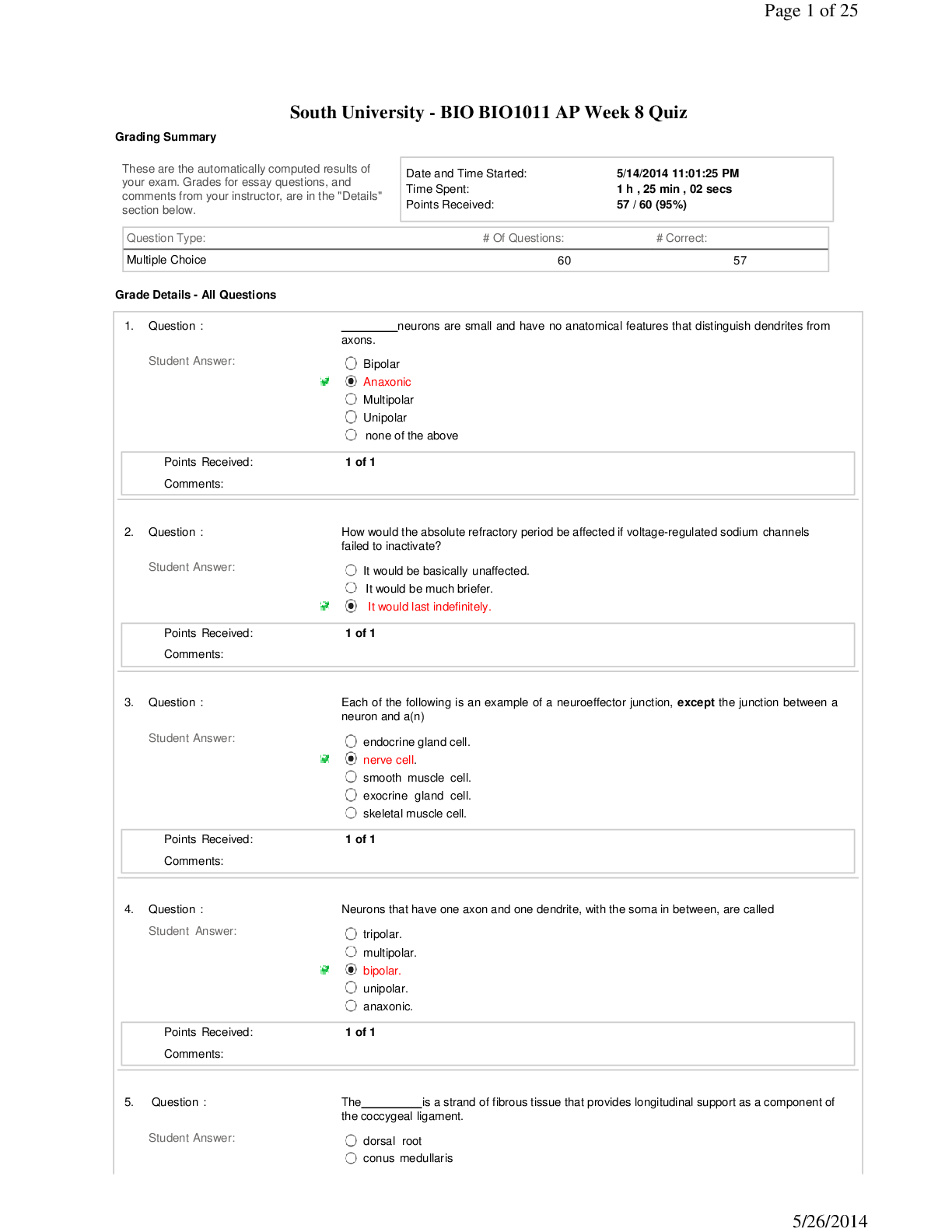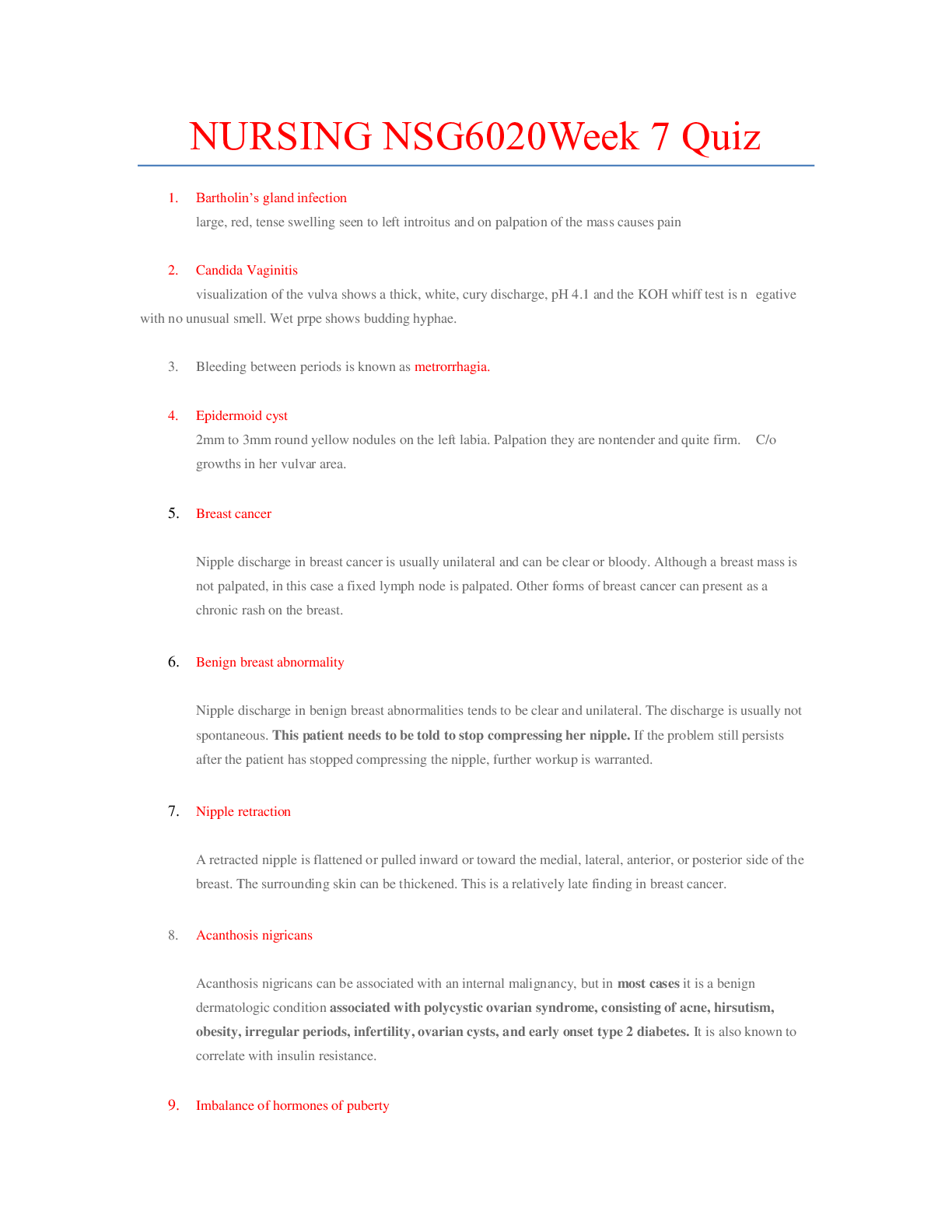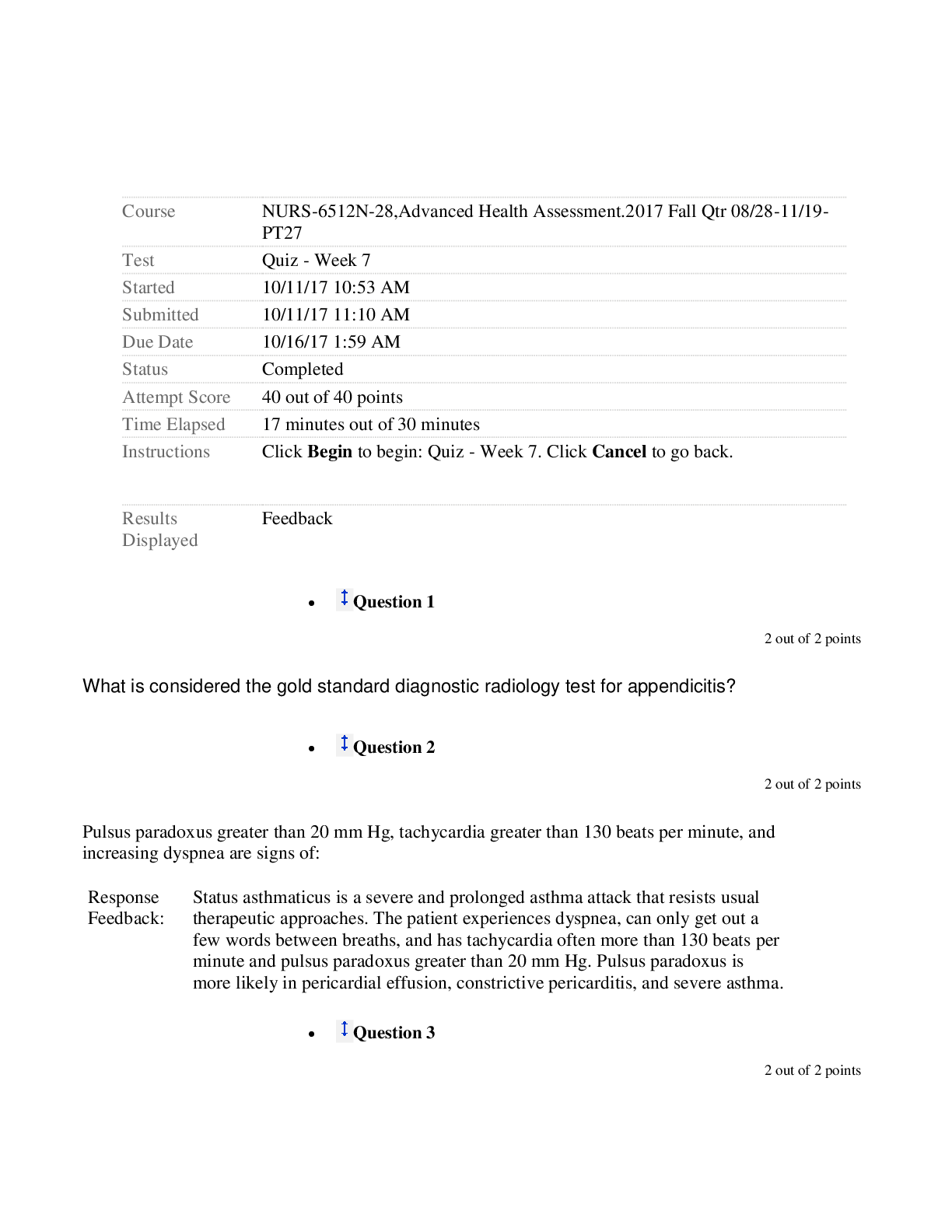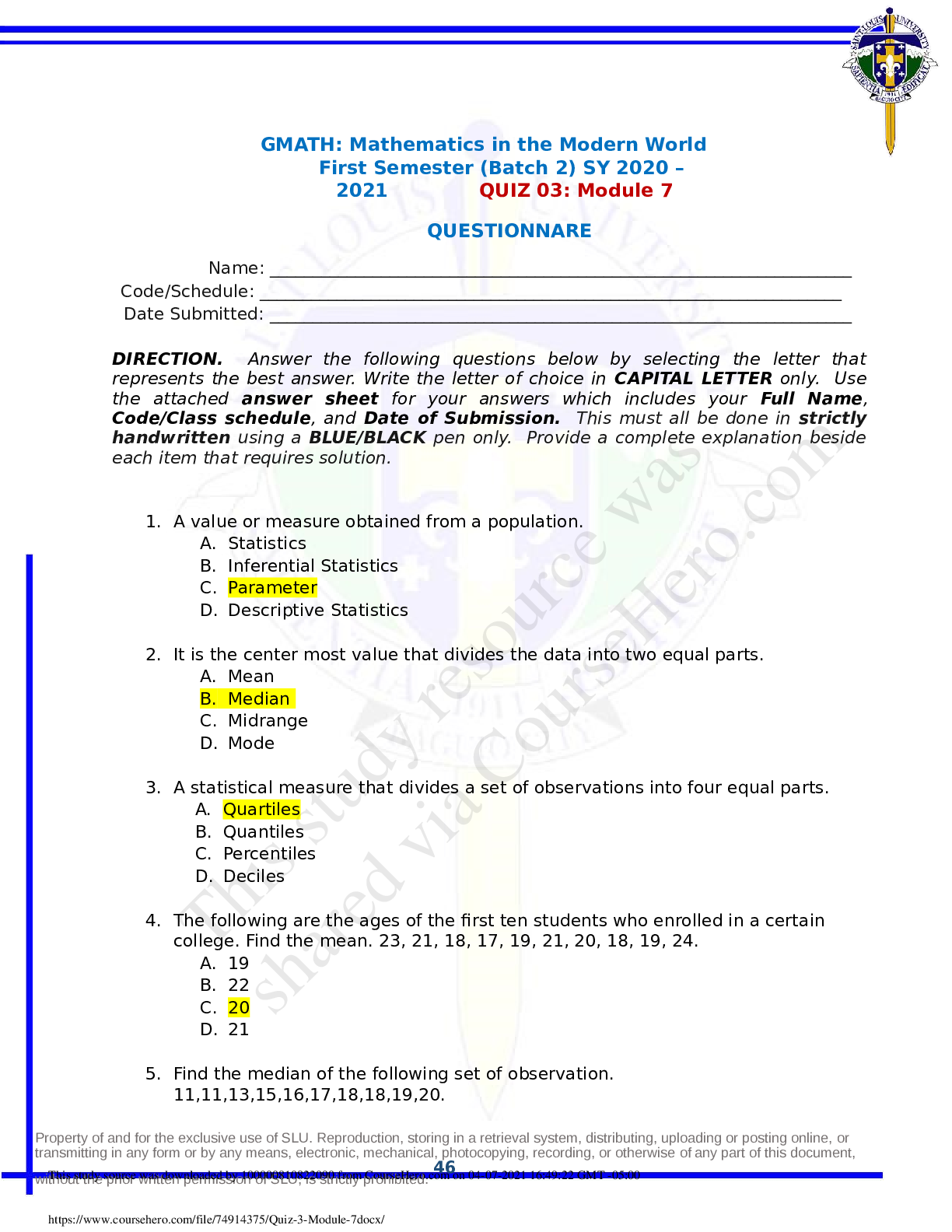Biology > EXAM > AP Biology Sem 1: 3.1.8 Explore: The Last Universal Ancestor Exploration. Includes Questions and Ans (All)
AP Biology Sem 1: 3.1.8 Explore: The Last Universal Ancestor Exploration. Includes Questions and Answers..
Document Content and Description Below
AP Biology Sem Date: 1. Construct a phylogenetic tree to show the organization of Archaea, Bacteria, and Eukarya as described in the third paragraph of the article. Identify the n ode corresponding to... the universal common ancestor on your tree diagram. (4 points) 2. Based on your diagram from the previous question, explain the following statement: "If prokaryotes (Archaea and Bacteria) were on both sides of the primary phylogenetic divide, then 'prokaryote' was not a phylogenetically meaningful taxon." (2 points) 3. a. Describe the metabolic evidence that is inconsistent with the hypothesis that the universal ancestor was a simple cell with little or no intermediary metabolism. (2 points) b. Explain why the “totipotent ancestor” model fails. (2 points) 4. Explain the pivotal assumption that the author challenges. (2 points) 5. The author proposes a new model to describe the universal ancestor. a. Describe the model that the author develops to explain the nature of the evolutionary process that gave rise to the universal ancestor. Use a flowchart or other organizational method to aid your description if you find it helpful. (3 points) b. Describe the nature of the universal ancestor according to this model. (2 points) 6. The author proposes that lateral gene transfer can explain some of the evidence that is discordant with the traditional universal ancestor model. Analyze the role of lateral gene transfer at three different stages along the path of evolution. Use this statement from the author to describe the three stages: “Evolution at the subcellular level can be viewed as a bridge between modern organismal evolution and the much earlier evolution that involved 'organic' chemicals in an abiotic world.” (4 points) 7. Evaluate whether you judge the proposed model to be feasible. Justify your answer. (4 points Light up questions 1. The second quote at the beginning of the article makes a connection between the nautilus, a cephalopod with a prominent head and tentacles, and a family of bioluminescent jellyfish. Briefly describe the connection between these two species. Predict what causes this relationship to occur and justify your prediction. (4 points) 2. One of the first choices that Chalfie and Prasher had to make was how to obtain the gfp gene. Describe the two options that the researchers considered. Explain why they chose a particular strategy. Explain whether or not this technique was successful and what this result indicated to the researchers. (5 points) 2. According to the article, explain one technological shortcoming that limited the researchers’ ability to observe the GFP protein. Research this technology to learn more. (3 points) 4. The authors originally titled their work ‘‘A New Marker for Gene Expression.’’ However, the editors of the prestigious journal Science did not approve. Explain why the authors chose this title and identify what additional information the longer title provided to the journal. (4 points) 5. Examine figure 6 and figure 7. Describe what these figures convey. Explain why both of these figures together are notable. (3 points) 6. Explain how GFP can be used for gene discovery. (2 points) 7. One of the resulting discoveries after the initial success with the GFP protein was made by Lynne Regan of Yale University. Explain her work and its significance. (2 point) 8. The article discusses a phenomenon called downregulation. Research the mechanism and describe how the expression of the GFP protein and downregulation benefit researc [Show More]
Last updated: 2 years ago
Preview 1 out of 6 pages

Buy this document to get the full access instantly
Instant Download Access after purchase
Buy NowInstant download
We Accept:

Reviews( 0 )
$9.50
Can't find what you want? Try our AI powered Search
Document information
Connected school, study & course
About the document
Uploaded On
Mar 02, 2021
Number of pages
6
Written in
Additional information
This document has been written for:
Uploaded
Mar 02, 2021
Downloads
0
Views
125











.png)



